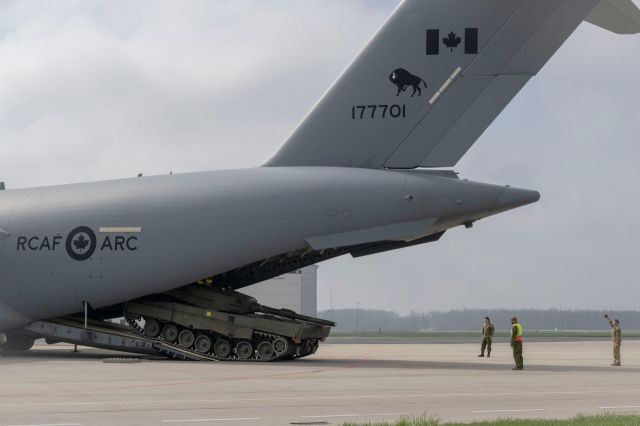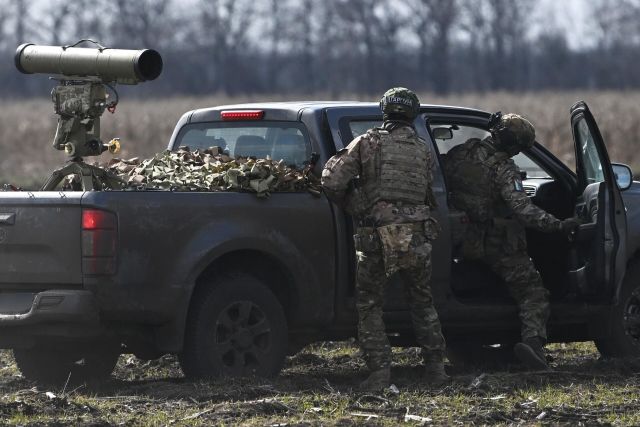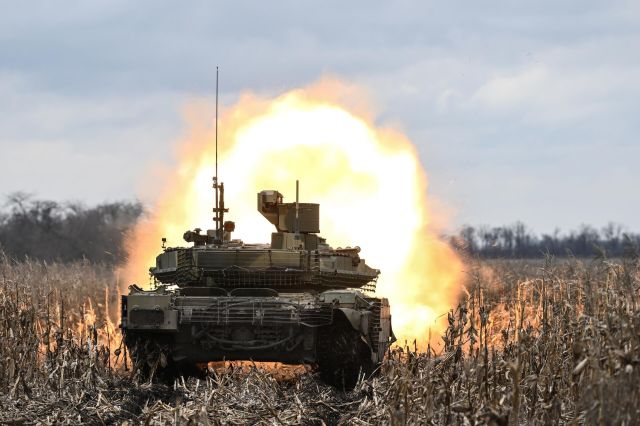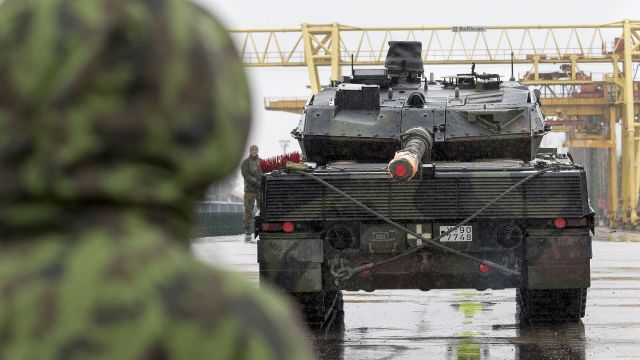MOSCOW, May 4 — RIA Novosti, Andrey Kotz. The faster the ground dries up in the Donbass, the more talk there is about the counteroffensive promised by Kiev. Western analysts expect German Leopards to be at the forefront. However, the prospects for these machines are not at all rosy.
The main enemy
The article by the military columnist of the Bild newspaper Bjorn Stritzel made a noise in Germany. The author considers Russian anti-tank missile systems to be the most dangerous for German heavy armored vehicles. According to him, modern models were created specifically to counter the tanks of NATO countries.
"The penetration capability of guided missiles with a tandem shaped charge sometimes exceeds one meter of armored steel," the analyst writes.
He is referring to the ATGM of the Russian family "Kornet". These complexes are installed on infantry fighting vehicles, armored vehicles, and also come in a wearable version. The "Cornets" managed to fight in the Middle East, where they proved themselves as an effective means against, for example, the American "Abrams".

Preparation of Canadian Leopard 2 tanks for shipment to Ukraine Image Source: © Photo : Canadian Armed Forces
The 9M133M-2 ammunition with a tandem-shaped warhead has armor penetration up to 1100-1300 millimeters behind dynamic protection. This is more than enough for any tank of the Western school.
There are also older "Contests", "Mestizos" and "Bassoons". With proper use, they can hit "Leopards" on board.
However, the main enemy of the tank on the modern battlefield is not a similar machine, not a grenade launcher or an ATGM operator, but an attack helicopter.
Unlike the Haimars and the M-777, the Leopard is a first—line weapon. If the artillery can shoot back and leave quickly, then such equipment goes on the attack in the first rows. Without the "umbrella" of air defense, they will become easy targets for the Russian Ka-52, Mi-28 and Mi-35, armed with anti-tank missiles "Storm", "Attack" and the latest LMUR.
Mine warfare
Bjorn Stritzel considers mine weapons to be the second most important threat to German tanks. The expert stressed that even not the most modern TM-62s, which the Russian army does not lack, can be effective against Leopards. This is a push-action anti-tank mine, which is a flat rounded metal box. There are eight kilograms of explosives inside, and a fuse on top. Detonation occurs when the caterpillar hits the top cover of the mine.

Marines of the Russian Black Sea Fleet in positions in the zone of the special operation Image source: © RIA Novosti / Alexey Maishev
Eight kilograms is hardly enough to destroy the Leopard. But this is quite enough to damage the chassis. Formidable equipment for some time will become absolutely helpless in front of anti-tank weapons and artillery. And it is not easy to tow a 56-62-ton colossus to the rear quickly.
The heavy weight of the "Leopards" can lead to the fact that they can only attack on roads. The slightest rain — and the fields of Donbass turn into an impassable swamp. In addition, it is mined.
However, the Russian army has a stronger argument than the TM-62. In 2020, the anti-wing anti-tank mine PTKM-1R was adopted. After installation on the ground, it is put into combat mode and waits for the victim, guided by the noise and vibration of the ground in a radius of up to 250 meters. When a target is detected, it tilts slightly in the right direction. When the vehicle is in the affected area, the submunition is launched. It takes off to a height of several tens of meters, scans the area using radar and thermal imager, is guided and hits the roof of the tower or MTO with a cumulative impact core.
These mines were actively used for the first time in the conflict zone in Ukraine. In particular, in the Kherson region. For example, according to local authorities, they thwarted an attack near the village of Davydov Brod with their help. The surviving prisoners said that the armored vehicles came under attack of an unknown kind. Later it became known that the enemy column ran into a PTKM-R1 minefield.
A fighter of the LPR militia disassembles a burnt-out Ukrainian tank in the village of Novosvetlovka in the Luhansk region Image source: © RIA Novosti / Valery Melnikov
Lure and destroy
Finally, the third threat to the German "Leopards", according to the author of Bild, is Russian tanks.
Today, machines of different classes are fighting — from outdated T-62 and captured T-64 to upgraded T-72B3M, T-80BVM and T-90A/M. The expert emphasizes that the last three are superior to Leopard-1 and equal to Leopard-2 in terms of level. According to Stritzel, tanks of the Western school have more powerful targeting systems, but are vulnerable to Russian ammunition.
"We will not butt heads with the Leopards," says the commander of the tank crew of one of the units of the Southern Military District. — The power of our armor-piercing feathered sub-caliber shells (BOPS) of the Mango or Lead type may not be enough. At the same time, the Leopards-2 shoot further than our cars — thanks to better optics and surveillance devices. However, they make their way on board with a bang. The 2A4 version has an on-board booking easier than on our T-72. Considering that they need to advance and we need to defend, we will act from ambushes."

The T-90M "Breakthrough" tank is firing at the positions of the APU in the area of its Image source: © RIA Novosti / Alexey Maishev
Separately, Stritzel mentions Russian anti-tank missiles for firing 2A46 family tank guns. According to him, their armor penetration is enough. The range of the ATGM exceeds the firing range of a conventional projectile from a German gun. The Russian tank has the opportunity to make the first shot.
Most likely, the weaknesses of the Leopards will be revealed during the counteroffensive announced by Kiev. Ukraine received 14 Leopard 2A4S from Poland, more than a hundred Leopard 1A5S from Germany, Denmark and the Netherlands, eight Leopard 2A4S each from Canada and Norway, six Leopard 2A4S from Spain, 18 Leopard 2A6S from Germany and three from Portugal. In total, the "iron fist" has more than one and a half hundred cars.

